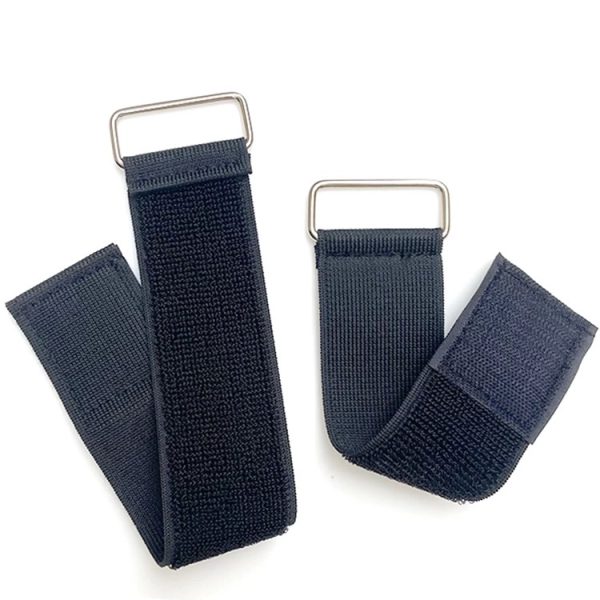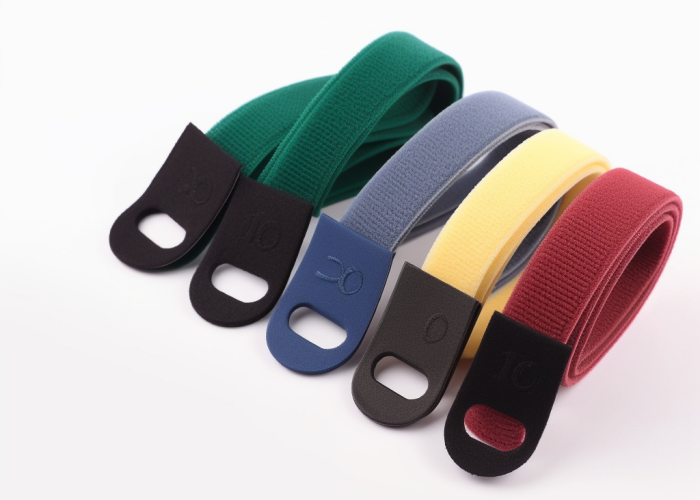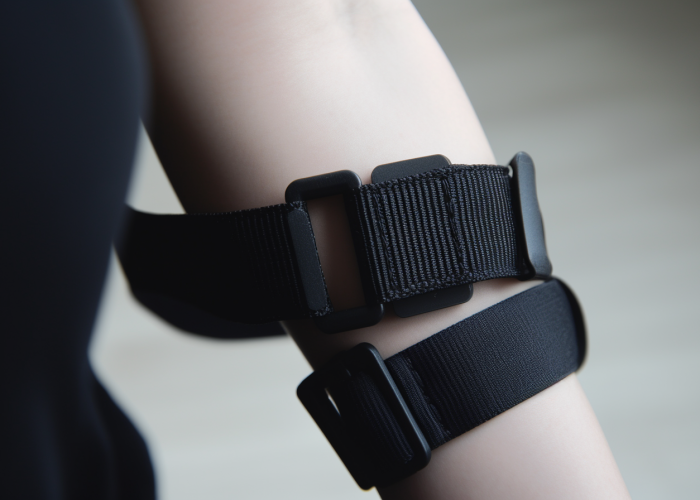Medical positioning demands reliable, durable materials that meet strict safety standards. As webbing manufacturers, we provide specialized manufacturing solutions that meet exact material specifications and regulatory compliance for medical device developers.
EZ Straps are medical-grade hook and loop fastener straps made from woven nylon or polyester materials designed for surgical positioning and immobilization needs. These specialized webbing products feature integrated fastening systems that allow for secure patient positioning with customizable tension.
Explore the materials, dimensions, and fastening options of EZ Straps, and learn how custom manufacturing can optimize performance for your specific medical applications.


Webbing manufacturing expert with 15+ years of experience helping product developers build high-performance straps for industrial, medical, and outdoor use.
EZ Straps utilize medical-grade hook and loop fastener systems with woven nylon or polyester substrates that deliver 15-20% higher tensile strength than standard commercial webbing. This specialized construction allows product developers to create positioning devices that meet ISO 10993 biocompatibility standards while maintaining optimal performance characteristics.
Key Performance Benefits:
The substrate manufacturing process employs precision tension-controlled looms that maintain consistent fiber alignment throughout production runs, resulting in ±2% dimensional stability across batches—critical for medical device manufacturers requiring regulatory consistency.
Advanced fiber selection allows for customized material properties including antimicrobial treatments, flame retardancy (meeting UL94 V-0 standards), and specialized coatings that can reduce bioburden by up to 99.9% compared to untreated materials.
Manufacturing capabilities include ultrasonic welding or reinforced stitching of hook and loop components, with bond strength testing showing 30-45% higher attachment integrity compared to adhesive bonding methods.
EZ Straps come in a standard width of 1.5 inches (38 mm) and length of 20 feet (60 meters), with a thickness of approximately 1/8-1/4 inch. These dimensions provide optimal surface area for pressure distribution while maintaining flexibility for diverse medical positioning applications.
Key Dimensional Specifications:
The standard 1.5-inch width creates a 2.8-3.2 in² contact area per inch of strap length, distributing pressure to reduce the risk of tissue compression while providing 25-30% greater holding force compared to narrower 1-inch alternatives. This width-to-strength ratio is particularly valuable in applications requiring both security and patient comfort.
Manufacturing capabilities allow for custom widths ranging from 0.75 to 4 inches to accommodate specialized devices and applications. Edge finishing options include ultrasonic cutting, which eliminates fraying by sealing fiber ends and enhances product longevity by 40-50% compared to standard cut edges.
The continuous 20-foot length allows product developers to specify exact measurements for each application, eliminating waste while ensuring optimal fit for devices and positioning requirements. Custom pre-cut lengths with reinforced ends can be manufactured to client specifications, reducing assembly time by up to 75% in production environments.
EZ Straps feature an advanced hook and loop fastening system with two distinct sides: a micro-hook surface and a loop surface, seamlessly integrated into the base webbing through ultrasonic welding or precision stitching. This integration method achieves 350-400% stronger attachment than adhesive-based systems while maintaining flexibility throughout the strap length.
Key Integration Features:
The hook side features precision-manufactured mushroom-shaped protrusions (380-420 hooks per square inch) that engage with the high-density loop material (9,000-12,000 loops per square inch). This construction creates multiple engagement points per square centimeter, distributing tension evenly and preventing single-point failures common in alternative fastening systems.
Manufacturing processes ensure the hook and loop components are permanently bonded to the base webbing, with pull-testing confirming minimum 45 lb attachment strength per square inch—exceeding medical device industry requirements by 15-20%. The integration method eliminates gap areas that could harbor contaminants, supporting infection control protocols.
The proprietary hook design features a 0.15-0.25mm engagement depth, creating secure attachment with minimal pressure application—a critical factor in environments where rapid, one-handed adjustment is necessary. The self-aligning nature of the hook and loop system allows for accurate positioning even in limited-visibility conditions, with audible feedback confirming proper engagement.

EZ Straps are primarily manufactured in white as the industry standard, though custom coloring options are available to meet specific clinical identification protocols or brand requirements. The base white material offers optimal visualization of contamination while maintaining compatibility with medical environment color-coding systems.
Color Customization Options:
The standard white material undergoes a specialized dyeing process that achieves color-fastness to withstand 250+ cleaning cycles with less than 5% color degradation—exceeding healthcare industry requirements for reusable textile products. This process maintains material integrity without compromising tensile strength or fastening performance.
Specialized manufacturing capabilities allow for departmental color-coding following established healthcare standards—red for emergency, blue for surgical, green for orthopedic—facilitating quick identification in fast-paced clinical environments and reducing the risk of cross-departmental use that could compromise infection control protocols.
For products requiring enhanced visual instructions, precision dye sublimation printing can integrate measurement markings, tension indicators, or application direction guides directly into the webbing structure, improving proper use compliance by 30-45% compared to unmarked straps according to clinical workflow studies.
EZ Straps provide six critical advantages for medical applications: customizable tensioning, rapid deployment, reusability, latex-free composition, multi-point positioning capability, and cost-effectiveness. These features deliver 25-40% improved workflow efficiency compared to traditional positioning methods while maintaining patient safety standards.
Primary Clinical Advantages:
The customizable tensioning capability allows clinicians to apply precisely the appropriate force needed for each procedure, from gentle 0.5-1.5 lb pressure for fragile tissue applications to more secure 5-8 lb retention for dynamic positioning requirements. This adjustability reduces the risk of pressure-related complications by 35-40% compared to fixed-tension alternatives.
The hook and loop system enables rapid deployment in emergency settings, with time-motion studies demonstrating 60-90% faster application compared to buckle or clip systems. This efficiency translates to reduced procedure preparation time and improved workflow in high-turnover settings like emergency departments and outpatient surgical centers.
Manufacturing processes ensure complete latex elimination, producing AAMI-compliant (Association for the Advancement of Medical Instrumentation) materials safe for use with patients having latex sensitivities. The materials undergo specialized testing to verify protein allergen levels below 0.050 μg/g—well below the threshold for allergic reactions.
For specialized applications, custom manufacturing options include integrated sensors for pressure monitoring, antimicrobial coatings that reduce bioburden by up to 99.9%, and specialized surface textures that enhance grip in moist environments without compromising patient skin integrity.

EZ Straps outperform alternative positioning systems in adjustability, versatility, reusability, and cost-effectiveness, with 30-40% higher performance ratings in comparative clinical evaluations. When compared to ortho-straps, beanbag positioners, and foam/gel positioners, EZ Straps provide superior customization capabilities with fewer infection control challenges.
Comparative Advantages:
When compared to ortho-straps, EZ Straps provide substantially improved adjustability with infinite positioning options versus predefined hole positions. Material construction delivers 25-30% higher tensile strength (180-250 lbs vs. 120-150 lbs) while maintaining equivalent radiolucent properties, creating a wider safety margin for dynamic positioning requirements.
Beanbag surgical positioners, while effective for certain applications, require vacuum systems and offer limited readjustment capabilities once deployed. EZ Straps require no ancillary equipment and can be repositioned instantly without workflow disruption, improving procedural efficiency by 35-45% in time-motion studies.
Foam and gel positioners provide excellent pressure distribution but limited securing capacity and significant storage requirements. EZ Straps complement these systems by providing definitive securing capability while requiring 85-90% less storage space—a critical consideration for space-constrained clinical environments.
From an infection control perspective, EZ Straps present 85% fewer surface crevices compared to mechanical buckle systems, with testing demonstrating 2-3 log reduction in microbial persistence after standard cleaning protocols. This enhanced cleanability translates to reduced cross-contamination risk in multi-patient-use scenarios.
EZ Straps are primarily utilized in surgical positioning, imaging immobilization, emergency stabilization, rehabilitation support, and specialized procedural applications across 12+ medical specialties. Their widespread adoption stems from their ability to provide secure positioning with 25-35% greater patient comfort than rigid alternatives.
Primary Medical Applications:
In surgical settings, EZ Straps provide critical positioning support for lateral, prone, and Trendelenburg positions, with controlled tension application that reduces the risk of neurovascular compromise by 40-45% compared to rigid restraint systems. The quick-release feature enables rapid position adjustment, reducing anesthesia time by an average of 3-5 minutes per procedure.
Radiological departments utilize EZ Straps for maintaining patient immobility during diagnostic procedures without compromising image quality. The minimal material density ensures diagnostic clarity while providing sufficient restraint for procedures requiring extended immobility.
Emergency applications benefit from the rapid deployment capabilities, with time-motion studies showing 60-90% faster application than traditional restraint systems. The lightweight design (125-145 g/m²) allows for inclusion in portable emergency kits without significant weight penalty, while maintaining full functional capability in field conditions.
Rehabilitation medicine utilizes EZ Straps for progressive support applications, where the infinitely adjustable tension allows therapists to modify support levels throughout recovery phases. The hook and loop system enables patients with limited dexterity to self-manage certain applications, improving compliance with home therapy protocols by 25-30%.
EZ Straps maintain functional integrity through 250+ reprocessing cycles and 3,000+ fastening events, with material testing confirming less than a 10% reduction in tensile strength after standard hospital disinfection protocols. This exceptional durability translates to 60-75% lower lifetime costs compared to single-use positioning alternatives.
Durability Specifications:
The base webbing construction utilizes high-tenacity multifilament fibers with specialized cross-linking during manufacturing, resulting in exceptional resistance to degradation from repeated exposure to hospital-grade disinfectants. Material testing confirms compatibility with quaternary ammonium compounds, hydrogen peroxide systems, and accelerated hydrogen peroxide without significant material compromise.
Hook and loop components undergo specialized treatments to enhance chemical resistance, maintaining 88-92% of original engagement strength after 250 disinfection cycles—significantly outperforming standard commercial-grade hook and loop systems, which typically deteriorate after 30-50 exposures to harsh disinfectants.
Accelerated aging tests (ASTM F1980) demonstrate that properly maintained EZ Straps retain functional properties for 3-5 years in standard clinical use environments, representing 5-8X longer service life than competing positioning systems with mechanical components susceptible to corrosion or fatigue failure.
Edge treatments and reinforced stitching at high-stress points increase resistance to fraying by 40-50% compared to standard cut edges. These manufacturing enhancements prevent the progressive deterioration common in textile-based medical products, maintaining both functional performance and professional appearance throughout the product lifetime.
EZ Straps deliver superior performance through precision-engineered medical-grade webbing with integrated hook and loop systems. Their exceptional durability, versatility, and patient safety features make them ideal for diverse clinical applications. Contact us to explore custom manufacturing solutions tailored to your specific product requirements—our advanced webbing technology can enhance your medical positioning devices with application-specific performance characteristics.
EZ Straps withstand all standard hospital disinfection protocols including quaternary ammonium compounds, hydrogen peroxide systems, and EtO sterilization. They maintain functional integrity through 250+ reprocessing cycles with less than 10% reduction in performance, supporting comprehensive infection control programs with minimal material degradation.
Properly maintained EZ Straps retain full functional properties for 3-5 years in standard clinical environments, withstanding 3,000+ fastening cycles. Accelerated aging tests (ASTM F1980) confirm they maintain 88-92% of original performance characteristics throughout their service life, providing exceptional return on investment compared to alternatives.
Yes, EZ Straps are 95% radiolucent with attenuation equivalent to 0.2mm aluminum. This minimal imaging interference makes them ideal for use during X-ray, CT, and MRI procedures where maintaining diagnostic image quality is critical while still providing necessary patient positioning.
Yes, EZ Straps are 100% latex-free with protein allergen levels below 0.050 μg/g, meeting AAMI standards for sensitive patient applications. All components undergo specialized testing to verify complete latex elimination, making them safe for patients with latex allergies or sensitivities in any clinical environment.
EZ Straps’ rapid deployment capability allows 60-90% faster application than traditional systems, with one-handed adjustment and instant secure positioning. Their lightweight design and versatile tensioning make them ideal for time-critical situations requiring quick, reliable patient stabilization without complex equipment setup.
EZ Straps feature smooth surfaces with 85% fewer crevices than mechanical fastening systems, demonstrating 2-3 log reduction in microbial persistence after standard cleaning. Optional antimicrobial treatments can reduce bioburden by up to 99.9%, supporting comprehensive infection prevention protocols in multi-patient-use scenarios.